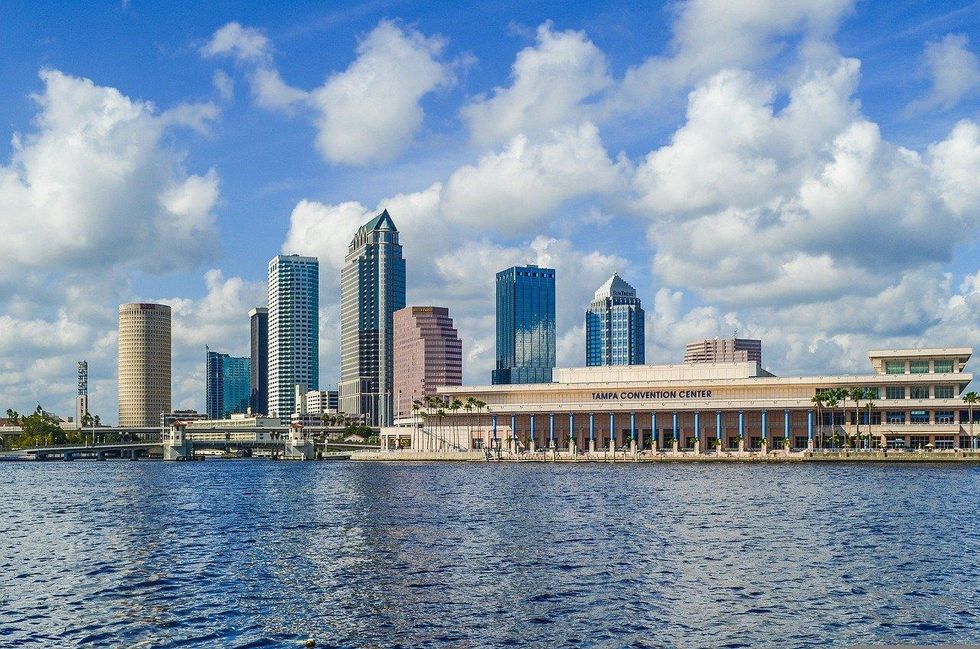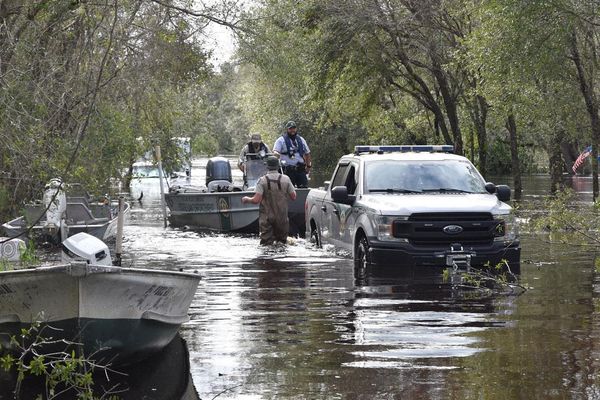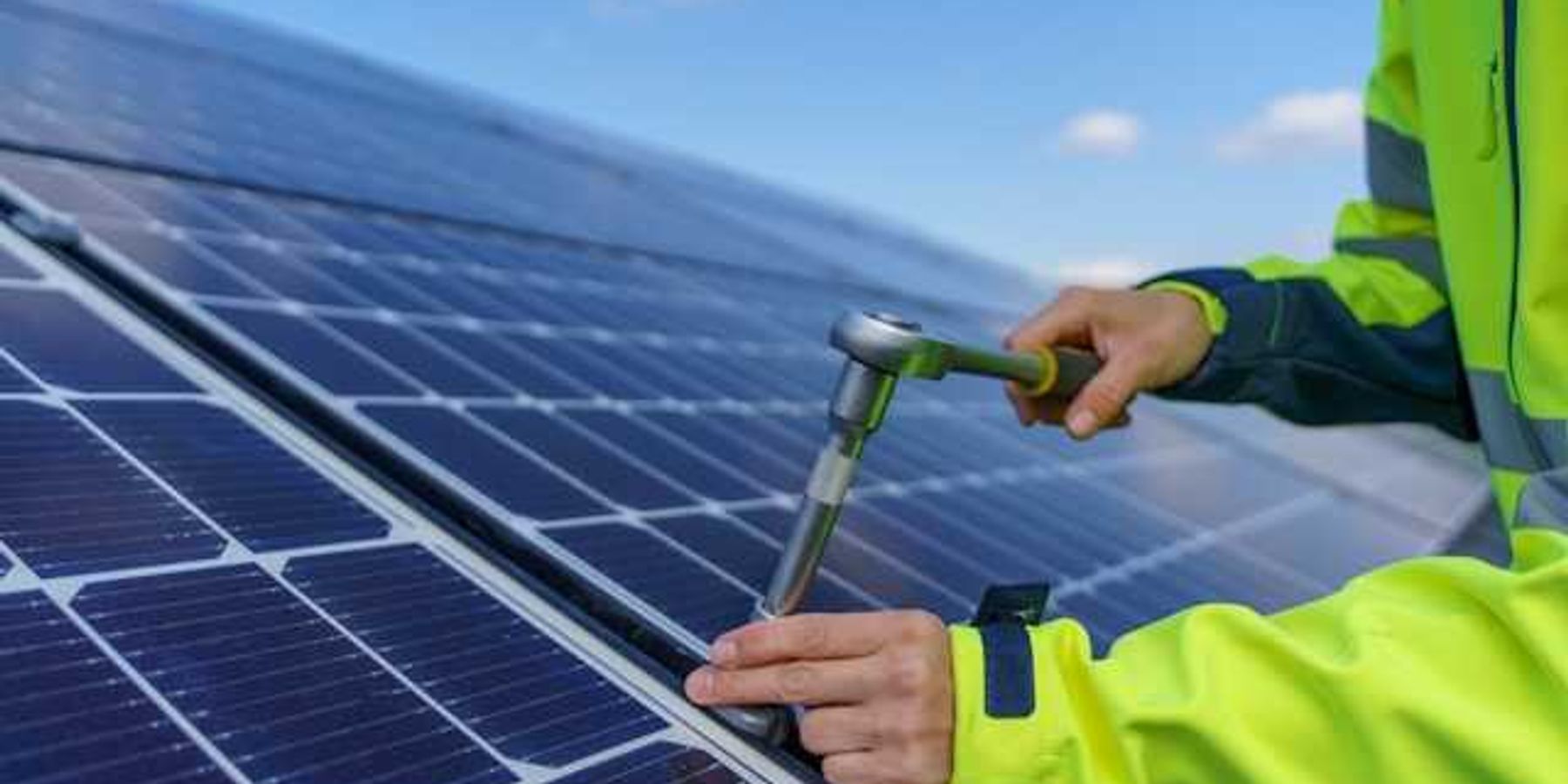weekend reader
Biden finalizes long-awaited hydrogen tax credits ahead of Trump presidency
Responses to the new rules have been mixed, and environmental advocates worry that Trump could undermine them.
The Biden administration has finalized long-anticipated hydrogen tax credit rules just weeks before Trump takes office.
The rules, set by the U.S. Department of the Treasury and the Internal Revenue Service, will determine when hydrogen producers can claim substantial tax credits intended to incentivize the production of clean hydrogen energy.
The draft rules received over 30,000 comments from industry groups and environmental advocates alike that Treasury and the IRS spent the last two years interpreting. While concessions were made on both sides, the reception of the rule has been mixed and the rule could be subject to change under the Trump administration.
The Biden administration has pushed for clean hydrogen production to decarbonize heavy industries that are difficult to electrify, like trucking and steelmaking. Hydrogen is often more expensive to produce than traditional energy sources, so the tax credits were created to decrease costs for the producer and allow hydrogen to compete with traditional energy sources in foreign and domestic markets.
- YouTubewww.youtube.com
Hydrogen can be produced through a variety of methods with varying carbon emissions. Clean hydrogen is defined by the new rules as creating up to four kilograms of carbon emissions per every kilogram of hydrogen produced. Credit-eligible hydrogen production has two pathways, electricity or methane. Eligible electricity sources include renewables like solar and wind, but also nuclear. Additionally, hydrogen production from methane, whether using natural gas, steam reforming or coal mining, is also included with the addition of carbon capture technologies to reduce emissions.
The tax credit, which producers can claim for up to a decade, operates on a tiered system that rewards hydrogen producers with the lowest carbon intensity with the largest credit of $3 per kilogram and is scaled down to about 60 cents per kilogram. The program will expire on Jan. 1, 2033, meaning facilities must begin construction by this date if they wish to claim the credit.
Concessions and Changes
Reception of the final hydrogen rules have been mixed. In the 30,000 comments made on the draft rules, industry groups requested things like more pathways for natural gas and looser requirements for clean hydrogen production, while many environmentalists requested a heavier emphasis on renewable energy and strengthened emissions calculations.
Beyond the concerns about rules, many stakeholders have spoken out against federally-funded hydrogen development, citing a lack of transparency and lack of public involvement in the decision-making process.
Environmental groups have supported “three pillars” as safeguards for hydrogen production and lobbied for them to remain in the final rules: incrementality, temporal matching and deliverability. They’re complex, but they aim to ensure that hydrogen growth is from new, sustainable facilities (incremental), that hydrogen facilities can produce energy supply to meet a demand (temporal matching) and that hydrogen is reliably delivered (deliverability). These three pillars, in theory and supported by studies, should prevent imbalances that could inadvertently result in more carbon emissions than not producing hydrogen to begin with. These safeguards specifically apply to hydrogen using electricity, whether from renewables or nuclear sources.
While the principles of the three pillars did remain in the final rule, they did not go untouched.
“There have been a lot of concessions,” Matt Lifson, an attorney with the Institute for Policy Integrity at the NYU School of Law, told EHN. “The Treasury did give industry a bunch of things that it asked for.”
For example, Lifson said, there are some exceptions for existing nuclear facilities that will be allowed to claim the credits despite not being new sources of energy, and some rules are more lax in states like California or Washington due to their “robust greenhouse gas emission caps,” according to the Treasury.
“One of the [federal] hydrogen hubs is in California, [and] one of the hydrogen hubs is in the Pacific Northwest,” Lifson noted. “So that [exemption] will make it easier for those hubs…And going back to the nuclear issue, several of those hubs involve hydrogen made from nuclear energy.”
Other concessions included more flexible timelines and deadlines on production standards, which some hydrogen producers praised.
“The new hydrogen rules mark significant progress, with notable revisions,” Plug Power, a hydrogen fuel cell company said in a statement. “While these updates are encouraging, we look forward to collaborating with the new administration to refine the regulations.”
Will the rules hold under a Trump presidency?
 Trump administration plans to overhaul Interior Department with budget cuts and policy reversalsCredit: palinchak/Big Stock Photo
Trump administration plans to overhaul Interior Department with budget cuts and policy reversalsCredit: palinchak/Big Stock PhotoIn a matter of days the Trump administration will have the ability to challenge the hydrogen rules under the Congressional Review Act.
“There's still the possibility that the rules could change under the Trump administration,” Lifson said. “So I don't know how much certainty we really have.”
There are a few factors that could prevent the rules from being invalidated. Amidst more pressing issues, hydrogen production might not make it onto Trump’s priority list for his first 100 days in office, and congressional review must be conducted within 60 days of a rule being published. Even if Trump does tackle the new rules on time, the process requires a majority vote, which could be difficult to achieve since the hydrogen credit rule has bipartisan support and the incoming Republican Congress will hold the majority on a thin margin.
“There is always a chance that this is an acceptable compromise between various segments of industry and the environmental community and that [the final rules] could hold,” Lifson said. “There's also the fact that if the Trump administration wanted to rewrite the regulations through its own rulemaking, they would need to rationally explain any departures that they made from the Biden rule. It can't just be a ‘because we said so’ type of thing.”
Peter Dykstra: With Ian, treat climate like an 'active shooter'
And let’s treat climate deniers as accomplices
You’ll never guess which U.S. metro area led the nation in the biggest increase in average home sale price from last year to this year.
It was Tampa-St. Petersburg, pride of the Sunshine state. TSP supplanted the longtime leader, the even sunnier Phoenix, in Arizona.
Miami-Dade rose to second on the list, and perennially-high-finisher Las Vegas was not far behind.
So let’s review: the hottest real estate market in the country just dodged a hurricane bullet, as Ian closely followed the destructive path of 2004’s Hurricane Charley, straight up the gullet of a smaller estuary at Punta Gorda and Port Charlotte, plowing over Fort Myers and across the state.
Miami, another hot real-state market, also missed the bullet. The last time the area was hit was in1992, with category-5 Hurricane Andrew, which subsequently triggered a crisis, as private insurers fled the Florida marketplace upon seeing Andrew’s then-unheard-of property damage toll of $40 billion.
Phoenix, the previous king of realty heat, is breaking its own records for thermal heat; and Las Vegas, a principal realty rival for Phoenix, also competes with the former for disappearing Colorado River water. The mighty river’s dwindling water supply may soon bring crisis to both cities, Southern California and a good slice of the U.S. food production.
We’re staring at an American mystery: We’re clamoring to live in our own future Atlantis, or in our own parched, broiling desert.
The strange phenomenon happens in not-so-hot markets, too: Take Fort Myers and Cape Coral, which suffered far worse from Hurricane Ian. Their Lee County is part of a relentless push toward living on the imperiled coast. In the 1950 census, Lee County had 23,211 citizens. Now, it is home to 787,976 people – meaning there are 34 times as many people in harm’s way than there were in 1950.
Florida’s lucky ones

Tampa Bay is one of the hottest real state markets in the country despite climate risks.
Credit: jharris407/Pixabay
One more thing about the good people of Tampa Bay: they didn’t just dodge a bullet when Hurricane Ian fooled forecasters and made landfall to the south, they dodged another hurricane bullet. The area is running a 101-year lucky streak, with the last direct hit coming in 1921.The bay is a large, south-facing estuary. A bullseye shot from a major hurricane would guarantee massive wind and surge damage.
In the 1920 census, Tampa’s Pinellas and Hillsborough counties had a combined population of 88,257. Today, they’re at 2,434,809 –this means that a century later, there are more than 27 times as many people, and a corresponding number of schools, hospitals, Burger Kings and more. All on the same amount of land, with the same amount of shoreline, at the same precious few feet above sea level.
That’s where sea level is right now, anyway. Within a few decades, we’re told that sea level rise will
have Duval Street in Key West permanently under water. Collins Avenue in Miami Beach and Biscayne Blvd.: gone. Parts of MacDill Air Force Base in Tampa, better suited for a Navy Yard. The ground surrounding Cape Canaveral’s historic launch pads, a tidal flat. The check-in desk at Mar-a-Lago will be a wading pool.
Passive accomplices
Yet Florida’s ambitious governor can’t bring himself to mention climate change. Nor can he pack Hurricane Ian onto a chartered jet and ship it up to an affluent resort in the Northeast. Florida’s two U.S. Senators, Marco Rubio and Rick Scott, can’t mention it either.
Scott preceded Ron DeSantis as governor. He reportedly blocked all state employees from mentioning climate change (Scott has denied this). I watched Scott do two extensive one-on-one interviews on Wednesday. He didn’t mention climate or sea level rise, nor did the interviewers call him out on it.
I don’t buy the “too soon” response that the NRA trots out after every mass shooting. Climate change will continue to be the “active shooter” in every storm, heat wave and drought that afflicts us.
We need to treat it that way, and talk about it. Now.
Peter Dykstra is our weekend editor and columnist and can be reached at pdykstra@ehn.org or @pdykstra.
His views do not necessarily represent those of Environmental Health News, The Daily Climate, or publisher Environmental Health Sciences.
Peter Dykstra: The good news that gets buried by the bad
On the environment beat, maybe it’s right that the bad news dominates. But the good news is out there, too.
Habitat loss. Climate change and its impacts. Mass extinctions. Pollution and its impacts. Every once in a while, maybe it’s a good idea for someone like me to shut up and talk about the victories – even if they’re small. Here are but a few.
An endangered species law with teeth
Wow. Just wow. When a large animal recovers from near-extinction, it’s usually because they’re cute and cuddly, or otherwise adorable, and generate huge public support. American alligators aren’t adorable and cuddling is not recommended.
But there’s a market for alligator meat and hides. Men and women who proudly call themselves “swamp rats” so efficiently killed these beasts that their 1967 designation as an endangered species pre-dated the current Endangered Species Act by six years.
Alligators made a remarkable comeback and were taken off the endangered list in 1987. Today, tightly controlled gator hunting has resumed, and unless you have strong feelings against hunting gators, Louisiana expects a record hunt this year.
Coal’s continuing comedown
Last week a demolition crew took down the main building and towering smokestack of a coal-burning power plant near Boardman, Oregon. As a result, Oregon became the latest state to become completely free of coal-burning facilities.
This week, Hawaii is scheduled to shut its only coal plant, meeting the state deadline to quit coal by the end of 2022. One caveat: Hawaii will have to backslide for a while until clean energy makes a home there. It'll be the tenth state to shut down its coal-burning facilities.
Currently, oil and natural gas, shipped in from the mainland, are the only options until clean energy takes hold.
A coal consolation
The American Chestnut once covered hillsides all over the eastern U.S., but a blight nearly wiped out the tree in the mid-20th Century.
And as America’s coal industry receded, it left behind a mess of abandoned coalfields with barren, acidified soil.
Enter a nonprofit called Green Forests Work. They’ve planted thousands of chestnuts on minesites — It turns out that chestnut seedlings can thrive in thin, disturbed acidic soils. Since 2009, the group has planted “over tens of thousands of chestnuts, across 9,400 acres of mined lands,” according to the New York Times.
The minesites and the chestnuts are both a long way from salvation, but here’s one case where innovation and inspiration work together.
Giving away your entire company for climate action
Yvon Chouinard was a climate activist before climate was hot. At 83, the billionaire owner of the Patagonia brand of outdoor wear and gear may no longer be an everyday rock climber, but he’s making big changes with the company: He’s giving it away to fund climate action.
He’s fond of saying “Earth is now our only shareholder” of his $3 billion baby, now the property of the Patagonia Purpose Trusts and a new nonprofit, the Holdfast Collective.
Building back green after disaster
Two years ago, in the midst of the worst wildfire year in Oregon history, about half the town of Talent was wiped off the map.
Following the lead of other towns felled by floods, tornadoes and even a tsunami, Talent built back smarter.
Triple-pane windows and fire-resistant insulation are two of the improvements backed by Energy Trust, a utility-supported nonprofit that counsels homeowners on energy efficiency. The website Fast Company talked to one homeowner who said his monthly electric bill has shrunk to $11.
Talent has many post-disaster role models. In May 2007, Greensburg Kansas was destroyed by an EF-5 tornado. Homes and buildings were rebuilt with Insulated concrete form blocks that deal much better with heat, cold and destructive winds. The entire town now runs on 100% renewable energy and high speed fiberoptics.
Valmeyer in Ilinois, and Soldiers Grove in Winsonsin, are two river towns that suffered regular damage from major floods. With federal funding, they rebuilt uphill and out of harm’s way, Valmeyer in 1993 and Soldiers Grove the early 1980s.
Now Talent and other towns destroyed by fire can provide examples for future wildfires.
But by curbing climate change and other causes of so many “natural” disasters, it would be better news if we focused more on the ounce of prevention.
Peter Dykstra is our weekend editor and columnist and can be reached at pdykstra@ehn.org or @pdykstra.
His views do not necessarily represent those of Environmental Health News, The Daily Climate, or publisher Environmental Health Sciences.
Peter Dykstra: Does climate action need a king?
Tradition could silence Charles III’s passionate voice on climate change. But should it?
So let’s figure this out: The Prince of Wales, historically passionate and outspoken about climate change, biodiversity and ocean issues, is supposed to clam up just as he rises to maximum visibility and influence?
The King Charles III has been right about climate change for decades. And organic farming. And biodiversity.
Here’s what he wrote for Newsweek in April:
“The world is on the brink, and we need the mobilizing urgency of a war-like footing if we are to win.”
Maybe we should listen a little.
But the backlash might be both strong and varied should the new king break with tradition and remain an active voice on climate.
British journalist Ella Creamer wrote in Politico: “If Charles continues his activist work, he may stand to forfeit not only approval among the American public — already dented by memory of his 90s affair — but also American interest in the British monarchy as a whole.”
Another, less pearl-clutching school of thought is that the king lacks moral authority to judge on climate because he’s a king – a filthy rich, manor-owning, jet-setting king.
Emily Atkin’s superb Heated newsletter contains a litany of complaints that, as front man for a historically brutal empire, Charles shouldn’t be looked to as a climate “king.”
The jet-setter argument has been thrown in Al Gore’s face every day for the past thirty-plus years. Leading a movement that wishes to drastically reduce carbon footprints in a climate emergency should not require one to travel only by covered wagon or Roman-style trireme. Every once in a while, world leaders gotta lead.
A terrible precedent
One Renaissance-era monarch set an unforgettable precedent for future rulers.
Henry VIII ruled Britain for much the early 16th century, and brought thunderous change to the nation and the throne. He was a bit of a royal boat rocker, ditching the Roman Catholic Church for crimping his style as a royal party animal.
After years of alleged debauchery, divorce and worse, Pope Clement VII threatened to excommunicate Henry in 1532, but died before he could follow through. His successor, Pope Paul III, ran Henry out in 1534.
In response, Henry VIII began what became the 50-year process of quitting Catholicism and founding the Church of England. It was a strong but imperfect example of a British monarch laying it down. My half-serious point here: If Henry VIII could turn the monarchy upside down for his own libido, Charles can vent a bit on an existential issue.
Even the Vatican…
…and its infallible pontiffs have come around to acknowledging basic science: In 1992 Pope John Paul II conceded the church has been wrong about heliocentrism – the earth really does revolve around the sun.
In 2008, Pope Benedict XVI praised Galileo for his contributions to science.
Then in 2015 Pope Francis issued the papal encyclical Laudato Si’, which directs catholics to devote words and deeds to protecting the Earth.
It’s hard to match the papal timeline to the British monarchy’s since the same monarch has been on the job through seven popes.
But maybe heredity’s at play. Charles’s dad, the late Prince Phillip, co-founded and served as president of the World Wildlife Fund International. His son, the new Prince of Wales, is backing The Earthshot Prize, an effort to highlight and support large-scale innovation.
Her Royal Highness Elizabeth II will be laid to rest this week, respected and beloved. I doubt Her Majesty will spin in her royal grave if her son continued to pitch in to save the planet. (And if she did, might she be a symbolic, energy-creating turbine? Sorry, too soon?)
Peter Dykstra is our weekend editor and columnist and can be reached at pdykstra@ehn.org or @pdykstra.
His views do not necessarily represent those of Environmental Health News, The Daily Climate, or publisher Environmental Health Sciences.
Peter Dykstra: Forty years of “just around the corner”
And now that electric vehicles may really be ready, a few new things to think about.
We’re seeing some big signs that electric vehicles (EV) may be ending their decades-long tease.
Here in Georgia, Republican Governor Brian Kemp is on the verge of landing two blockbuster electric vehicle production plants. Yes, a Republican with a track record of indifference on climate and environment.
Kemp faces a tough reelection bid in November against Stacey Abrams, and EV’s might help win that race. He’s cut a deal with Hyundai to base the Korean automaker’s EV manufacturing near Savannah. Hyundai plans to drop $5.5 billion into a complex with 8,100 jobs. In late 2021, Kemp closed a deal with California-based Rivian to build a $5 billion electric truck plant 40 miles east of Atlanta, promising more than 7,000 jobs.
The accelerated push for EV’s is not a Georgia thing. It is happening across the country.
Last month, California announced it will outlaw the sale of new fossil-fuel-powered cars starting in 2035. As many as a dozen other states are expected to follow suit.
GM has announced a not-nearly-big-enough network of 5,000 fast-charging EV stations to be located at truck stops and along interstates.
And last month’s unprecedented federal climate-healthcare legislation is an unmistakable sign that, for now, Washington is taking climate action seriously.
But…
The electronics revolution needed to support the EV revolution will create its own industries, many keying on the rare elements capable of powering advanced batteries.
There’s bit of a problem with this, though. Most of the fifteen elements that are considered to be rare earths – lanthanum, cerium and their 13 neighbors who reside in a rarely-visited neighborhood on the Periodic Table – can often be found in nodules on the sea floor or beneath the melting landscape of Greenland.
Marine scientists, and the environmentalists that have waged a 40-year fight to block or limit seabed mining for not-so-rare elements like manganese, cobalt and copper, are concerned that disruptive activity on the sea floor could harm sea life throughout the water column, and from top to bottom on the food chain.
Exploration firms assure that their activity will cause no harm. Since seabed mining is still just a concept, neither side can offer proof for their claims.
Yet, in August, a U.N. effort to establish standards for any seabed mining for rare earths failed.
The Pacific island nation of Nauru has served notice that they may start mining next year, setting off twin competitions for environmental damage and security tensions. China, with its huge electronics industry, currently leads in rare earth use, but the U.S. and others would love to catch up.Of course, I’m being more than a tad whiny. The potential risks of accessing rare elements are in no way a reason to shun EV’s.
The need to wean ourselves from our oil habit is a life-or-death thing. There are other ways that EV’s aren’t ideal. Juicing up your clean car on power that comes from a coal plant isn’t helping anyone.
But the news is overly good for those who seek an end to humanity’s fossil fuel era.
Peter Dykstra is our weekend editor and columnist and can be reached at pdykstra@ehn.org or @pdykstra.
His views do not necessarily represent those of Environmental Health News, The Daily Climate, or publisher Environmental Health Sciences.
Peter Dykstra: A foodie tastes climate change
Some samples of where food is going… or gone.
Pity the poor climate reporter. Tasked to write about the costly future and gloomy topic of climate change, we often turn to food to try to relieve our misery. But in our case, that means writing about it, not eating it.
This past week, I distinctly heard the sound of a butter knife clinking against the bottom of a four-ounce jar.
Dijon mustard had joined the list of edible climate victims.
NPR sent its veteran Paris correspondent Eleanor Beardsley to the Bordeaux region. Not to report on the threat to Bordeaux wine, mind you, but on the region’s Dijon mustard. It turns out that genuine Dijon requires mustard seeds from Canada, and last year’s brutal, record-setting “heat dome” ruined the hot mustard crop.
And there’s more concern at the other end of the condiment aisle.
Olive output has suffered in recent years as more frequent winter waves of warm and chilly Mediterranean weather impact the trees’ flowering and fruiting. And as olives go, so goes olive oil.
And with our olive oil, so goes tomato sauce for pizza and pasta. About thirty percent of the world’s canned tomato crop comes from California’s Central Valley, where near-catastrophic drought threatens not a bad year, but a bad forever in one of the world’s key food-producing zones.
So, if Marie Antoinette were around to witness this, would she offer a tomato sauce workaround? Maybe, “Let them eat white clam sauce?”
Well... even for those of us who can stand white clam sauce, clams and other mollusks are vulnerable to the oceans’ rising levels of acidification.
And then there’s the wheat flour that’s turned into traditional pasta. Breadbaskets like Ukraine and the U.S. heartland are increasingly subject to drought, and nutritionists predict that rising CO2 levels could rob wheat, rice and other grains of nutrients.
As early as 2011, a study predicted problems for all manner of fruits and nuts grown throughout the world’s temperate regions. Pistachios, walnuts, cherries and peaches are among the crops that need warm summers and chilly, but not frigid winters to prosper. Warming winter temps may be a problem from Israel to Georgia.
So let’s take a break
Enough about our food for now. Let’s have a drink to relax. Are you a wine person? Well, get some Bordeaux while you can. It’s expected that the world’s prime grape-growing regions may shift with the climate.
Beer? Subtle changes in hops, barley –the yeast that turns sugar into alcohol– and other brewing essentials may not kill your favorite microbrew, but we have no idea how it will taste.
And if you prefer to inhale your escape, the folks at www.mjbizdaily.com have some news for you. The publication, which seems to regard itself as the Wall Street Journal of weed, projects marijuana growers as following the vineyards’ paths on the where cannabis will struggle, and the new places where it could thrive.
The 800-pound steer in the room

Of course, our current diet is a big factor in the climate crisis. Beef, pork and chicken, all raised factory-farming style, greatly contribute to methane release and other air-pollution issues. In regions where cattle are still raised on pasture, they are to blame for the clearing of tropical rainforests, like the Amazon, wiping out one of the world's great carbon sinks.
I could lose five pounds just writing down why I’m a climate-writing, meat-eating, climate-destroying hypocrite.
Prefer seafood? Sensitive to water temperatures, forage fish like sardines and anchovies are de-camping for warmer waters. On the North American East Coast, lobsters are deserting the southern New England coast for the cooler waters of Maine. But lobstermen worry that the crustaceans are merely biding their time to dodge the thermal draft and eventually will head to Canadian waters.
For their part, North Carolina fishermen, rigged and experienced to capture summer flounder, have to chase their target hundreds of miles up the coast to New Jersey.
So some of our food is leaving us. Other food is running and hiding.
Thanks, climate change!
Peter Dykstra is our weekend editor and columnist and can be reached at pdykstra@ehn.org or @pdykstra.
His views do not necessarily represent those of Environmental Health News, The Daily Climate, or publisher Environmental Health Sciences.











